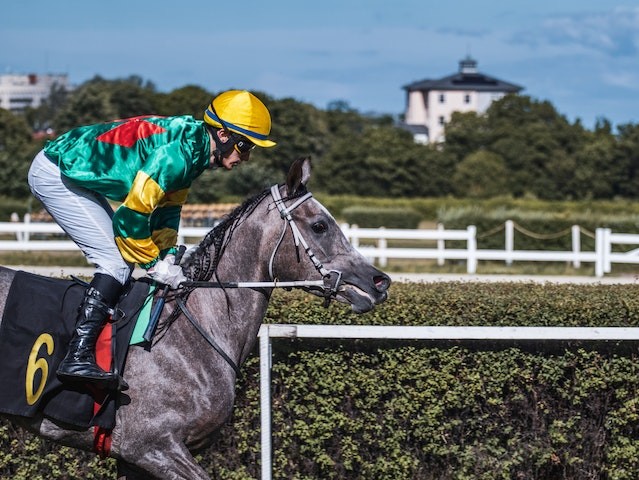Training Horses for the Racetrack: A Game of Patience and Strategy
 Engaging in a game at a live casino, where every move and decision is the culmination of understanding, practice, and strategy, is an exhilarating experience. The world of horse racing shares this ethos, with one fundamental difference: instead of cards or roulette wheels, the focus is on a living, breathing creature – the horse. Training a horse for racing isn’t a swift process; it requires time, patience, and a deep understanding of the animal. Let’s delve into the extensive preparation required to get a horse race-ready.
Engaging in a game at a live casino, where every move and decision is the culmination of understanding, practice, and strategy, is an exhilarating experience. The world of horse racing shares this ethos, with one fundamental difference: instead of cards or roulette wheels, the focus is on a living, breathing creature – the horse. Training a horse for racing isn’t a swift process; it requires time, patience, and a deep understanding of the animal. Let’s delve into the extensive preparation required to get a horse race-ready.
1. The Starting Line: Early Beginnings
Training begins when a horse is just a foal, not in the strict sense of rigorous exercises, but in terms of handling. The young horse is taught to be led by a halter, to be tied up, and to be comfortable with human touch. Just as a novice learns the basics of a live casino game, these are the foundational lessons for a horse.
2. Yearling Year: Building Strength and Stamina
Around the age of one, horses start their more formalized training. They are introduced to a bridle and a saddle, though riding them at this stage is avoided. Lunging, where the horse moves around the trainer in a controlled circle, helps in building stamina, obedience, and muscle strength.
3. Two-Year-Olds: Introduction to the Track
At two years, the horse is introduced to the racetrack. They are ridden more frequently, and their workouts become more structured. They start with trotting, then move on to cantering, and finally, short sprints. This gradual introduction ensures that their still-developing muscles and bones don’t face undue stress.
4. Recognizing Individual Strengths
Much like how different games in a live casino appeal to various players due to individual strengths and preferences, horses, too, have their unique strengths. Some might excel in short sprints, while others could have the stamina for longer races. Recognizing and nurturing these strengths is crucial.
5. Mock Races and Gate Training
Before participating in official races, the young horse is trained to burst out of the starting gate with speed and precision. This requires them to overcome any initial hesitation and understand the cue for a fast start. Mock races, involving a few horses running together, accustom them to the atmosphere of a real race.
6. Consistency is Key
Training a racehorse isn’t just about teaching it to run fast. Consistency in performance is crucial. A horse’s daily routine involves workouts, feeding schedules, and rest. This routine ensures they stay in peak physical condition and are mentally prepared for the high-pressure environment of a race.
7. Mental Conditioning
Horses, by nature, can be skittish. The cacophony of a race day, with large crowds, loud noises, and the intensity of a race, can be daunting. Therefore, part of their training involves mental conditioning, ensuring they remain focused and unfazed by the surroundings.
8. Continuous Learning and Adaptation
Even after participating in their initial races, a horse’s training never genuinely ends. Just as a live casino player must continually adapt strategies based on the game’s progress, trainers and jockeys analyze every race to understand areas of improvement, adjusting training regimens accordingly.
9. Health and Recovery
Training isn’t just about pushing the horse to its limits. Recovery plays an integral role. This might involve massages, controlled diets, and even physiotherapy. Any sign of discomfort or injury, and the horse’s welfare takes precedence over racing.
10. Transitioning Out of Racing
A horse’s racing career is relatively short, often culminating around the age of seven or eight, though some continue beyond that. Once they retire from racing, they might move into breeding or equestrian sports, or simply enjoy a more relaxed life. The transition is as crucial as the initial training phases.
Training a horse for racing is an intricate dance of physical conditioning, mental training, and continuous adaptation. The journey from a young foal to a race champion mirrors the trajectory of a novice player in a live casino, progressing from a beginner to a seasoned player, mastering strategies, understanding the nuances, and, most importantly, learning from each experience. Both realms, despite their apparent differences, celebrate the spirit of dedication, passion, and the pursuit of excellence.